Adenium Arabicum succulent is also known as the Desert Rose or Elephants Foot Plant. The succulent is part of the Apocynaceae family. Succulent found in the harsh condition of hot desserts with limited water supply and nutrients, the plant has adapted to the environment very well. It can survive without water for several weeks.
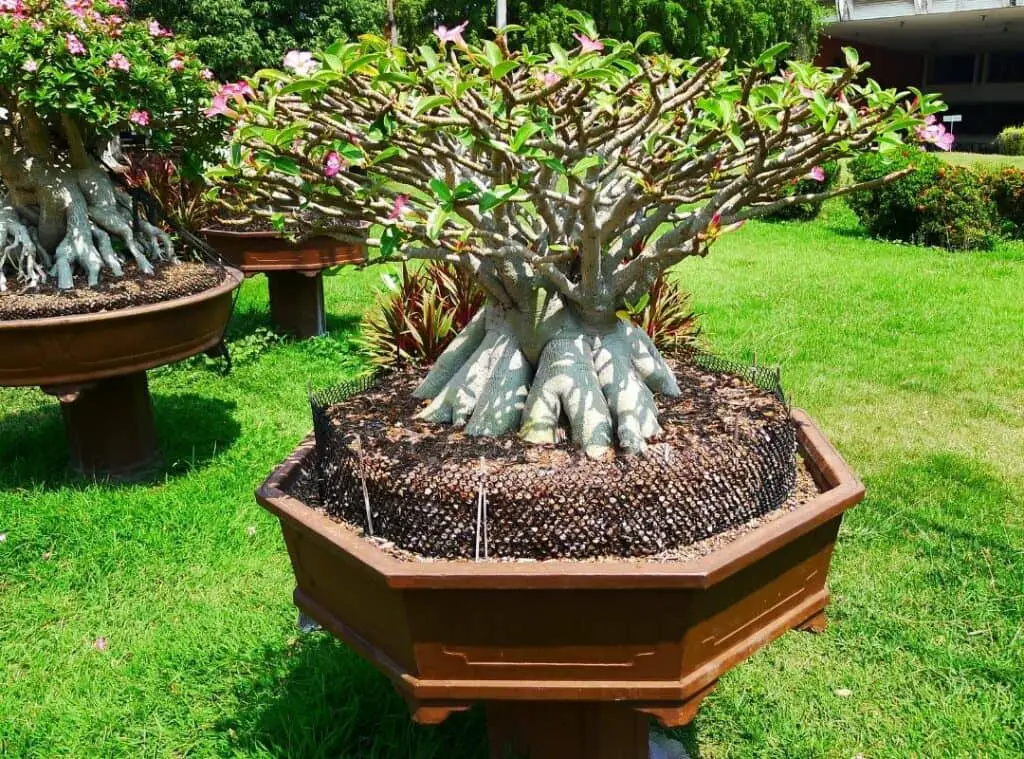
What is Adenium Arabicum?
The plant Origen in Yemen and Saudi Arabia, where most of the land is covered in the desert. The Adenium Arabicum succulent is the most popular house plant in the succulent category. The plant can grow in unusual and lethal environmental conditions. Surprisingly the plant has learned the adapt to the surrounding environment and find a way to survive without water and essential nutrition, which is vital for growth.
The plant also grows beautiful-looking tubular flowers. Due to its unique quality, the plant has high demand in the international market. Plant enthusiasts like to have these fascinating plant species in their gardens. The small size of the plant makes it easy to cultivate in the pot. The plant’s base trunk grows horizontally, covering the required space to support the growing leaves and branches.
Chunky trunk and short finger-like branches would cover the entire space in the pot as it starts growing. The plant also develops the caudex at the bottom of the trunk, storing the water and nutrition for the problematic situation. The caudex protects the water from vaporizing and uses it when there is no water for weeks or even the month. The plant easily survives in dry conditions such as deserts and lethal habitats without needing external sources.
Where other plants vanish when weather condition becomes lethal, the Adenium Arabicum succulent still seen survived in the harsh condition. You can spot the plant growing in the granite rocks and cliff faces with many flowers, and even the habitat is not suitable for any living being to survive.
How do I identify an Adenium Arabicum?
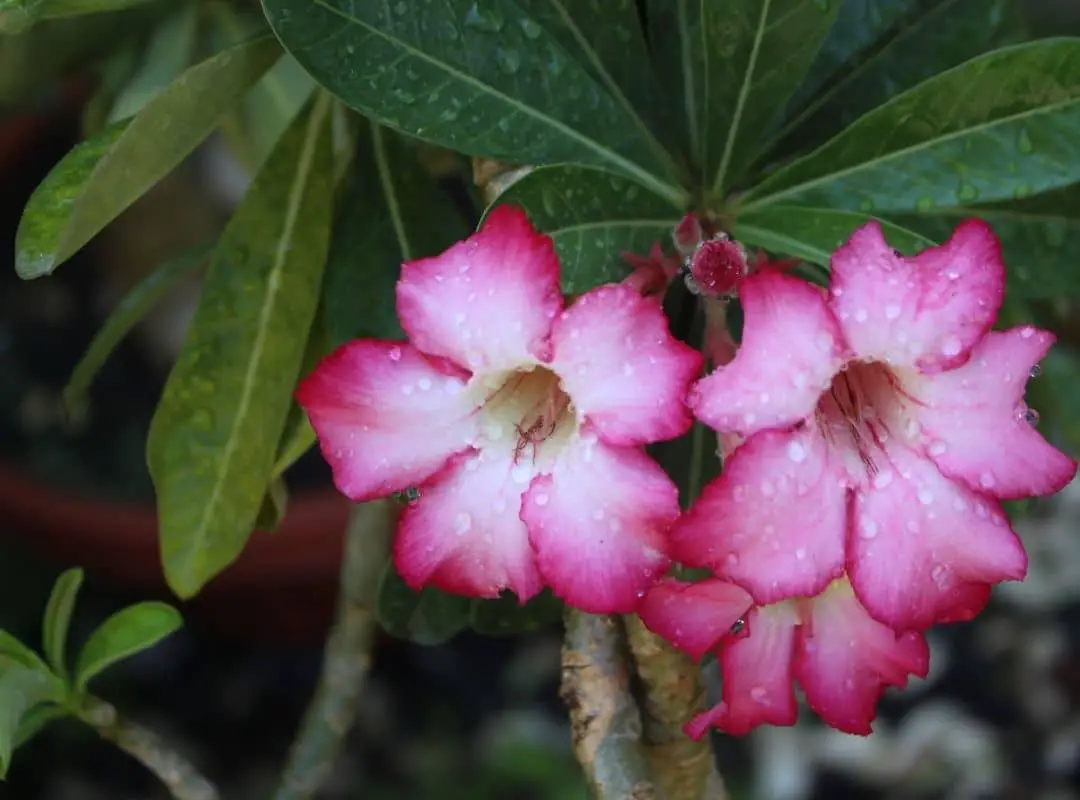
The Adenium Arabicum is a unique plant with attractive leaves, flowers, and uncommon trunk size that gives a plant its identity. They look like heavy objects that grow rapidly and covered the entire pot. The Adenium Arabicum grows up to 16.4 feet tall. As it starts growing, the trunk spreads horizontally, covering maximum space. The plant would have large size leaves with shiny layers to it.
The flower would grow when the condition is right. It would have beautiful looking pink to red shade flowers growing all over the plant, covering the entire space.
How do you take care of an Adenium Arabicum?
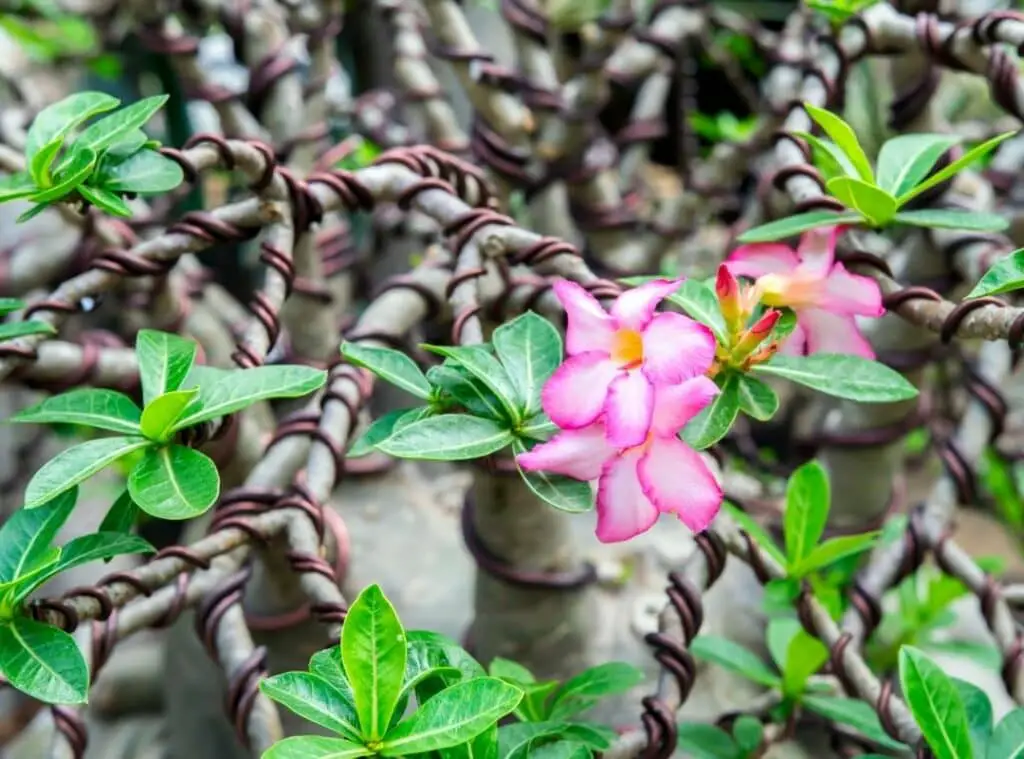
There are five different varieties of Adenium Arabicum. All of them are native to arid or semi-arid climates. The surprising quality about the plant is they adopt the new environment quickly and keep their survival intact. It automatically adjusts its growth when it is kept in a tropical or semi-tropical environment. Indeed, the Adenium Arabicum adopts almost all types of environment and keeps growing.
The plant needs plenty of sun and warmth with the well-draining system in the soil. You should avoid waterlogged soil. Else the roots of the plant would rot. The Adenium Arabicum is like to hot climate as it originated in the desert where the temperature in the expected condition reaches above 70-degree F. The plant enjoys growth in such hot temperatures.
In countries where the temperature drops below 40 degrees, the plant adjusts its growth. It turns its natural habitat to suit the new environment by producing beautiful-looking flowers throughout the warmer months. The beautiful flowers are long-lasting and attract many bees and hummingbirds. In the cool weather, move the plant indoors to make it sustain longer and enjoy the winter with the Adenium Arabicum.
Size
3–9 ft. tall, 3–5 ft. wide
Growth
They are slow-growing plants
Light Requirement
The plant thrives under full sun.
Temperature and humidity
Warm temperatures. 65 and 90 degrees.
is it cold, hardy?
Yes. The plant would find it challenging to thrive under the temperature of 10 degrees celsius.
Zone
USDA zones 11 and 12
Watering Requirement
As we have already known, the Adenium Arabicum Succulent plant is highly tolerant and found in desserts. Therefore, when you are watering the plant, you should keep the water level in complete moderation. The watering rules apply to all succulent plants throughout the growing season. Water when needed with the fixed quantity. The excess water should be quickly drained through the pot. Ensure that there is no water log inside the pot. Wait until the soil dries out completely before watering again.
You have to ensure that the plant does not sit in the watering soil for too long. If the weather condition does not allow the soil to dry while the plant is placed indoors, you can put the pot in the garden under direct sunlight. Or keep the windows open so the sunlight would reach the plant soil and make it dry
Soil Requirement Type / pH
Neutral to acidic. Sandy, well-drained
Flowering and Fragrance
They have pink, and red color flowers
Pot size Potting and Repotting
Use the mid-size pot to allow the plant to occupy sufficient space during its early growth.
Plant
You can plant the Adenium Arabicum succulent in the pot or garden where the soil condition is dry. Keep the plant separate from the regular plant as the Adenium Arabicum succulent would require arid soil with less or no water.
Fertilizer and time of year
Fertilizers made for succulents contain the right amount of N, P, and K nutrients that are useful for the plant’s growth. These nutrients are excellent for maximum absorption into the roots, foliage, and flowers. As an alternative, you can use organic seaweed fertilizer. You can find specialized succulent feed in the stores to help the plant fulfill its nutrition need. Feed the plant the right amount of fertilizer once in two to three weeks in the winter season. In the summer, reduce the quantity to once a month.
Dormancy
Winter is the time when the plant experiences dormancy. Other plants Pairs Well With You can pair the other succulent plants with the Adenium Arabicum as both will share the common traits in the growth and water condition.
Can be toxic to pets
Yes. The Adenium Arabicum could be toxic to pets, so you should keep the plant away from the pet and children. The plant contains the milky sap that possesses lethal toxins. When consumed by the pet, it may produce serious health problems in the pet. Trunk, roots, leaves, and flowers all contain some toxin substance that is lethal for the animals. If the pet comes in contact with the desert, rose, immediately reach the emergency clinic for treatment.
You should use gloves when working with the plant. Wash your hand after you touch the plant to avoid any substance from entering your lungs. If any symptoms persist in your body, immediately reach the daycare facility for treatment.
Handling the plant
Handle the plant carefully as the toxic substance may stick to your hands and may enter your body which could have a lethal effect on your body.
Common bugs and Illness issues
Keep the plant in a protected environment as the plant may attract the bees and butterflies with other bugs that love to eat the flowers.
Special Care tips
Dry soil with the proper draining system to prevent the roots from rotting. Use the fertilizer once a month during the growth period and put the plant in direct sunlight, where most of the time the plant is exposed to the sun. The right condition would allow the plant to thrive quickly.
How do you propagate an Adenium Arabicum?
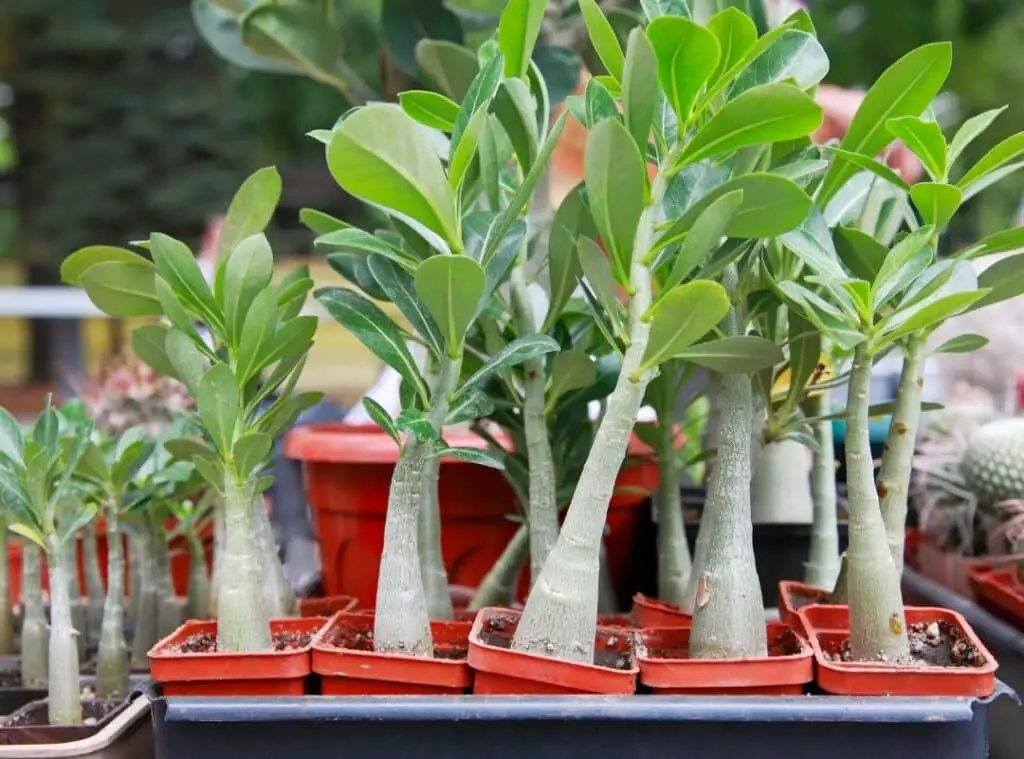
Like any other succulent plant, propagating the Adenium Arabicum is quite easy. Cut the plant’s pieces from the mother plant and put them in the bowl for a few days to develop the roots. Sprinkle the water frequently to make the air humid around it. In a few days, the roots will be grown to the cut pieces of the plant. The next step is putting the plant in the dry soil and letting the plant grow under direct sunlight. Sprinkle the water frequently in the early stage of the growth. Avoid too much water. Else the roots will rot.
How do you report an Adenium arabicum?
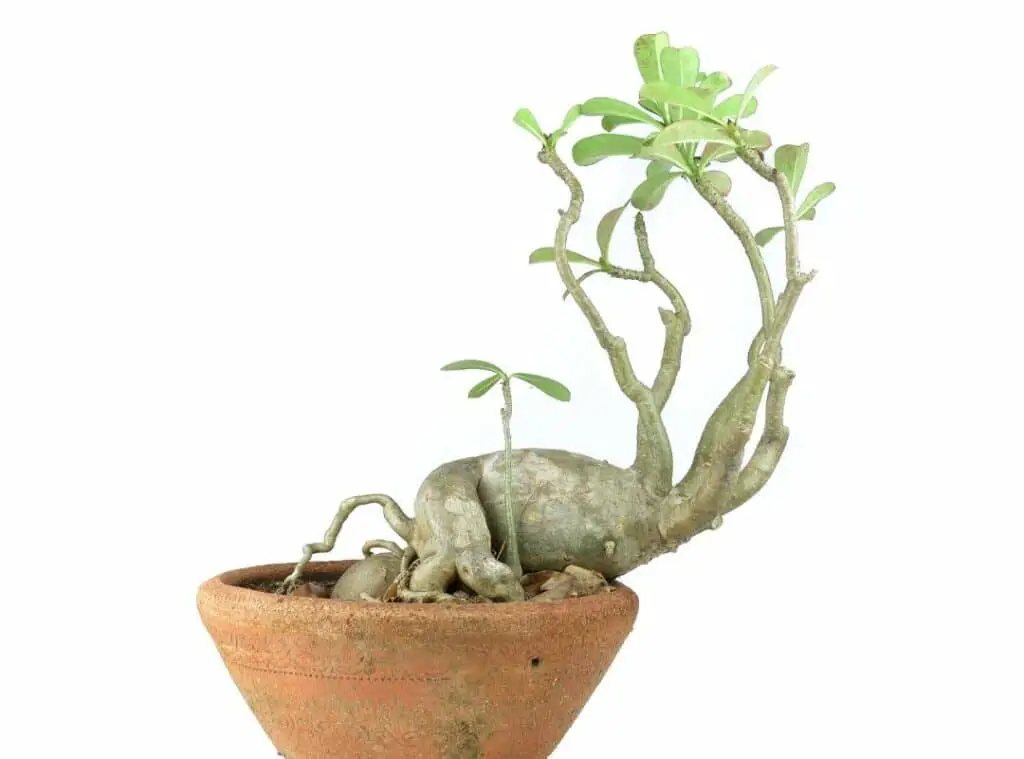
Preferably during the warm season when the plant has reached its ultimate growth, you may have to report the plant to a new pot or place to allow the plant to grow more. Ensure that the soil is arid before you begin the reporting. Now gently remove the plant from the soil and knock away the old soil.
Check if there are any dead roots on the plant, cut them, and keep only fresh roots. Put the plant back into the new pot, and fill the pot with the new soil. Leave the plant for a few weeks to dry the soil and get ready for the new environment. After a few weeks, start watering the plant.
Adenium Arabicum plant benefits
Adenium Arabicum looked beautiful when planted in the pot and kept in the house. They also produce beautiful-looking flowers that occupy the plant’s maximum structure, giving it a unique appearance. The attractive trunk shape gives the plant a unique look. The plant is drought tolerant so that it can sustain in lethal weather conditions without water.
With low maintenance, the plant is easily cultivated in the garden even if no one is around to take care of it. The plant only requires dry soil and direct sunlight to thrive. When the condition is met, the plant grows exponentially and becomes one of the garden’s most attractive plants. The wood of the plant is sometimes used as fuel. In medical treatment, the plant is used to treat wounds, the sole of the feet, and many skin care treatments. It is also known as a pain reliever, especially in toothache treatment.
Related questions
Is Adenium arabicum an indoor plant?
Yes. The Adenium arabicum is an indoor plant that can be planted in a small size pot. However, as the plant matures, you may have to shift the plant to large size pot using the repotting technique.
Is Adenium arabicum toxic?
Yes. The Adenium arabicum is one of the plant breeds containing a dangerous toxic substance that is lethal for humans and animals. Large doses could lead to serious health problems.
Can Adenium arabicum be rooted in water?
Rooting Adenium arabicum in the water is not needed. The plant could grow the roots in average weather conditions even without needing to plant them in the soil. Put the cut part in the container until it starts growing the roots.
Once the roots are grown, place the plant in the dry soil, and the Adenium arabicum would start thriving in average conditions. Put the pot in direct sunlight in the early stage of its growth and pour the water in moderation to avoid the root from rotting.
What is the difference between Arabicum and Adenium?
Both the plant Arabicum and Adenium looks similar in appearance. It won’t be easy to decide which one is the Arabicum. The trunk size also develops in similar shapes. The color of the leaves and trunk would look similar to each other. Adenium Obesum needs moist soil to thrive, whereas Arabicum needs dry soil. The water log in the soil could rot the plant roots, and the plant would die.
Credit to : Koustav Bhattacharya
Read more : Peperomia Graveolens (Ruby Glow) Succulent Care | Full Guide
